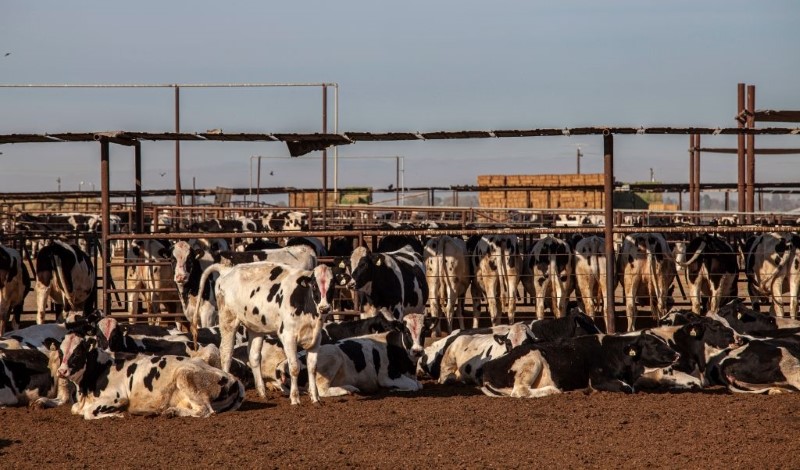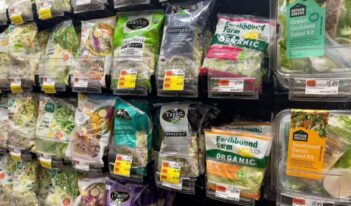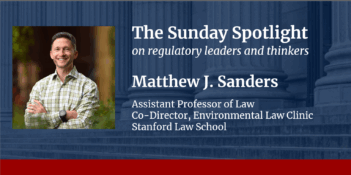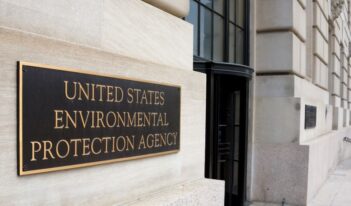
Scholars address regulatory struggles to rein in greenhouse gas emissions from agriculture.
Greenhouse gases (GHG) are broadly accepted as a main driver of climate change, and food production contributes substantially to total GHG emissions globally. Despite significant federal investment in reducing emissions across most sectors, regulators and policymakers in the United States continue to exempt agricultural enterprises from much compulsory oversight.
A 2005 agreement between the U.S. Environmental Protection Agency (EPA) and concentrated animal feeding operations (CAFOs), for example, shielded these large agricultural operations from many regulatory obligations under the Clean Air Act. Even though other legislation requires most polluting industries to report hazardous emissions to EPA, CAFOs are exempt from reporting substantial animal waste emissions, thanks in part to subsequent amendments under the Fair Agricultural Reporting Method Act of 2018.
State policies also contain regulatory exemptions. For example, California’s ambitious Senate Bill 1383 includes funding incentives for farmers but falls short of imposing emission reduction requirements. An analysis by the California Air Resources Board found that, despite high program participation, the state’s dairy and livestock industry was still far from meeting the legislature’s emission reduction goals.
The U.S. Department of Agriculture (USDA) has taken a similarly noncompulsory approach to regulation, encouraging farmers to participate in a variety of Farm Bill conservation programs that offer compensation for emissions reduction efforts. The Farm Bill, last passed in 2018, is subject to renewal this year, and its conservation title has received considerable focus from members of Congress.
Policymakers’ recognition that food production is necessary for human survival provides one explanation for climate regulation’s exceptionalism toward animal agriculture. Interfering with productivity in this industry could have more dire consequences than it would in other industries, such as food shortages and price surges. Some scholars argue that another reason for regulatory exceptionalism toward agriculture is chronic underestimation of its contribution to overall GHG emissions. These scholars claim that EPA has been unable to measure the sector’s emissions reliably because agricultural production cannot be standardized in the same way that other industries are, making its impact more difficult to gauge. In addition, scholars identify the agriculture industry’s powerful lobbying wing as a reason for its exceptional treatment.
Still, many experts recognize that achieving net-zero GHG emissions targets will require cooperation from all sectors, including agriculture. After all, climate change itself can wreak havoc on agriculture itself—resulting in the very same food shortages that some regulatory exemptions are designed to avoid. In addition to threatening global food security, climate-driven destabilization of the agriculture industry would have vast economic implications. According to EPA and USDA, agricultural activities contribute over $1 trillion annually to the U.S. gross domestic product and provide over 20 million jobs to U.S. residents.
In this week’s Saturday Seminar, scholars, policy analysts, and other experts weigh in on the agriculture industry’s GHG emissions, identifying gaps in existing regulations, discussing challenges regulators face in filling them, and proposing solutions for the future.
- Peter H. Lehner of Earthjustice and Nathan A. Rosenberg of Harvard Law School argue that the agriculture sector’s contribution to climate change is “much more substantial” than current estimates suggest. In their article in the Environmental Law Reporter, Lehner and Rosenberg contend that the agriculture sector’s impact on climate change is likely misunderstood because agricultural production cannot be standardized to the same degree as it is in other sectors. Consequently, Lehner and Rosenberg suggest that EPA’s agricultural GHG emissions estimates are “deceptively low,” leading policymakers and journalists to focus on other sectors of the economy when contemplating climate change mitigation strategies. Lehner and Rosenberg argue that unless significant changes are made to the food system, agricultural emissions alone will render it impossible to reach the goals articulated in the Paris Climate Accords.
- In an issue brief for Resources for the Future, Senior Fellow Michael Toman and several coauthors report that agricultural GHG emissions come from sources “inherently challenging to mitigate,” including soil tillage, fertilizer use, animal digestive processes, and manure decomposition. The Toman team proposes an emissions reduction credit system that would create a financial incentive for farmers to cut their GHG emissions. By transitioning to lower-emitting practices, farmers would produce a surplus of GHG credits, which they could then sell to other parties seeking to offset their emissions. Because the success of such a system depends on accurate metrics, Toman and his coauthors urge investment in better measurement methods and program effectiveness assessments.
- Agricultural subsidies should be redirected toward investments that prioritize sustainability as well as productivity, argue Rob Vos and Will Martin of International Food Policy Research Institute and Danielle Resnick of the Brookings Institution. In a recent paper published by the International Food Policy Research Institute, Vos, Martin, and Resnick explain that entrenched interests make changes in farm subsidy practices difficult. Vos, Martin, and Resnick contend that political incentives, institutional resistance to change, and mistaken beliefs cause resistance to subsidy reallocations that would benefit both farmers and the environment. Using case studies from around the world, Vos, Martin, and Resnick discuss the benefits and challenges of several policy options, including taxation, transferable emissions quotas, and new forms of subsidies.
- In a recent article in the Columbia Journal of Environmental Law, Randall Abate of George Washington University Law School argues that accountability litigation against industrial animal agriculture could help to facilitate a transition toward more sustainable methods of food production. Abate explains that more than 90 percent of all U.S. livestock reside in CAFOs, where they are placed in tight quarters and raised in industrialized conditions. He contends that while CAFOs contribute substantially to climate change, they have been left largely unregulated because of lobbying efforts and fears that overregulation will cause food shortages. One solution, Abate argues, may be private lawsuits designed to compel agencies to regulate CAFOs under common law doctrine, developing a legal theory that agencies have a duty to regulate GHG pollution sources.
- Texas A&M Law School professor Daniel E. Walters contends that regulatory gaps could allow public nuisance suits against animal agricultural enterprises to overcome displacement barriers. In a Columbia Journal of Environmental Law article, Walters explains that displacement theory bars claims that interfere with federal statutory programs. Under this theory, the Supreme Court held in American Electric Power v. Connecticut that states could not bring federal public nuisance claims against GHG-emitting power plants because Congress had delegated authority to EPA to regulate power plant emissions under the Clean Air Act. While many climate change suits have failed on similar grounds since, Walters argues that the Clean Air Act does not contain a framework for regulating animal agriculture. As a result, he concludes that a nuisance suit against animal agricultural enterprises could surmount the displacement hurdle erected by American Electric Power.
- A carbon offset protocol that pays farmers to transition from livestock to crops could be a viable alternative to more controversial GHG reduction programs, argue Manny Rutinel of Earthjustice and Sebastian Quaade of Stanford Law School’s Regulation, Evaluation, and Governance Lab. In a recent article in the Environmental Law Reporter, Rutinel and Quaade contend that a “livestock-to-plants farm transition project” would meet the general criteria for a high-quality carbon offset. Despite the project’s promise, Rutinel and Quaade identify several challenges standing in the way of change. Market rigidities, including government subsidies for livestock production and the sunk costs of animal-related farm equipment, discourage farmers from adopting new methods. “Leakage,” or unintended increases in GHG emissions, also interferes with effectiveness: As more farms transition to crops, the market supply of animal products will decrease, inflating their price and potentially causing new livestock producers to enter the market.
- According to a White House Office of Domestic Climate Policy plan to reduce methane emissions in the United States, a whole-of-government approach to cutting methane levels will yield public health benefits and air quality improvements, create new jobs, and bolster U.S. government-led efforts to address methane globally. The Climate Policy Office detailed ways to reduce the agriculture sector’s methane emissions, including by adopting improved manure management systems, expanding the generation and use of “on-farm” renewable energy from methane, and improving methods for measuring agricultural methane. According to the plan, USDA will take the lead on quantifying methane levels and assessing the efficacy of methane reduction technologies, including through feed additives. The S. Department of Energy will fund projects to measure GHG emissions from agricultural fields.
The Saturday Seminar is a weekly feature that aims to put into written form the kind of content that would be conveyed in a live seminar involving regulatory experts. Each week, The Regulatory Review publishes a brief overview of a selected regulatory topic and then distills recent research and scholarly writing on that topic.



